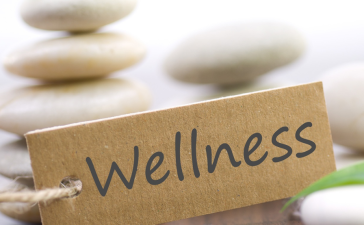In a world dominated by constant digital connection, rising stress levels, and fast-paced routines, the pursuit of wellness has become more vital than ever. Wellness is not just the absence of illness—it is a proactive, conscious approach to living that prioritizes balance, vitality, and mental clarity. Health is only one part of the equation; true wellness encompasses your mind, body, and lifestyle.
This article will explore the key pillars of wellness, the benefits of living a wellness-focused life, and practical strategies to improve your physical, mental, and emotional health.
Understanding the Concept of Wellness
Wellness is a multidimensional and dynamic process of becoming aware of and making choices toward a healthy and fulfilling life. Unlike reactive healthcare, which deals with treating illness, wellness is proactive—it’s about preventing disease and optimizing well-being through everyday habits.
There are several interconnected dimensions of wellness:
-
Physical – Nutrition, exercise, sleep, and preventive healthcare
-
Emotional – Understanding, managing, and expressing feelings
-
Mental/Intellectual – Lifelong learning, creativity, and problem-solving
-
Social – Connection, belonging, and supportive relationships
-
Spiritual – Purpose, values, and meaning in life
-
Environmental – Living in a safe, clean, and supportive environment
-
Occupational and Financial – Satisfaction in work and financial stability
All these dimensions influence each other. Neglecting one area can impact the others, while improving one can enhance your overall sense of wellness.

Why Wellness Matters in Today’s World
Modern life is filled with triggers that can undermine wellness: fast food, sedentary behavior, long screen time, sleep deprivation, and chronic stress. Over time, these factors contribute to heart disease, obesity, depression, anxiety, and even autoimmune conditions.
Prioritizing wellness can lead to:
-
Increased energy and productivity
-
Better immune function and fewer illnesses
-
Enhanced mood and mental clarity
-
Improved relationships and communication
-
Greater self-confidence and resilience
-
Longevity and better quality of life
By shifting focus from short-term fixes to long-term habits, people can build a sustainable foundation for good health.
Core Elements of a Wellness-Focused Lifestyle
1. Nourishing Nutrition
Your body needs high-quality fuel to function optimally. A wellness-oriented diet focuses on whole, unprocessed foods and avoids excessive sugar, trans fats, and artificial additives.
Tips:
-
Eat plenty of fruits, vegetables, legumes, nuts, seeds, and whole grains
-
Choose lean proteins like fish, eggs, tofu, and legumes
-
Stay hydrated—drink at least 2 liters of water daily
-
Reduce or eliminate processed foods and sugary beverages
-
Practice mindful eating—slow down and enjoy your meals
2. Movement and Physical Activity
Exercise is essential for cardiovascular health, muscle strength, brain function, and emotional well-being. You don’t need to be a gym rat—any form of movement counts.
Recommendations:
-
Get at least 150 minutes of moderate activity weekly
-
Include strength training twice per week
-
Incorporate daily movement like walking, stretching, or dancing
-
Find enjoyable activities to stay motivated—yoga, cycling, sports, etc.
Regular movement also helps regulate stress hormones and boosts “feel-good” endorphins.
3. Quality Sleep
Sleep is the foundation of both physical and mental health. Lack of rest increases the risk of obesity, heart disease, diabetes, and mood disorders.
Healthy sleep habits:
-
Aim for 7–9 hours of sleep per night
-
Maintain a consistent bedtime and wake time—even on weekends
-
Avoid screens and caffeine at least one hour before bed
-
Keep your sleep environment dark, quiet, and cool
-
Use relaxation techniques like reading, breathing, or meditating before bed
4. Stress Management and Mental Health
Chronic stress wreaks havoc on the body and mind. Effective stress management is a central pillar of wellness.
Strategies include:
-
Deep breathing, meditation, or yoga
-
Journaling to release emotions
-
Talking to a therapist or support group
-
Practicing gratitude and positive self-talk
-
Reducing screen time and exposure to negative news
-
Taking breaks and setting boundaries with work
Mental wellness is just as important as physical health. Seek help when you need it—there’s no shame in prioritizing your emotional wellbeing.
5. Building Healthy Relationships
Humans are social creatures. Healthy connections improve mental health, reduce stress, and even lengthen lifespan.
Ways to cultivate social wellness:
-
Spend quality time with family and friends
-
Communicate openly and honestly
-
Practice empathy and active listening
-
Set boundaries with toxic relationships
-
Engage in community or volunteer activities
Even small acts of kindness and regular check-ins can strengthen emotional bonds.
6. Purpose, Values, and Mindfulness
Spiritual wellness is about connection to your values, purpose, and something greater than yourself. This could be religion, nature, creativity, or simply your own guiding principles.
Ideas to explore spiritual wellness:
-
Practice daily gratitude
-
Engage in meditation, prayer, or quiet reflection
-
Spend time in nature
-
Identify your personal values and goals
-
Volunteer or help others in need
A strong sense of purpose helps you navigate challenges and stay resilient.
7. Creating a Supportive Environment
Your surroundings influence your behavior, mood, and health. Clean, safe, and peaceful spaces promote wellness, while clutter and noise can increase stress.
Improve your environment:
-
Declutter your home and workspace
-
Add calming elements like plants, candles, or art
-
Use natural light as much as possible
-
Limit toxins by choosing eco-friendly cleaning products
-
Spend time outdoors and unplug from digital distractions
Wellness in the Digital Age
Technology can support or harm your wellness, depending on how you use it.
Use tech mindfully:
-
Limit screen time and take tech breaks
-
Use fitness or meditation apps for structure
-
Block social media during downtime
-
Track your habits with digital wellness tools—but don’t obsess
-
Balance online life with in-person connection
Digital wellness is about being aware of how technology affects your mood, focus, and relationships—and making conscious choices.

Final Thoughts: Start Where You Are
Wellness is a journey, not a destination. You don’t need to overhaul your entire life overnight. Start small. Drink more water. Walk after meals. Sleep a little earlier. Say “no” when you need rest.
These small shifts, repeated consistently, build into powerful change.
Remember:
-
Progress, not perfection is the goal
-
Your health is your most valuable investment
-
Self-care is not selfish—it’s essential
-
Every day is a new chance to take better care of yourself
Wellness is deeply personal. Listen to your body. Trust your instincts. And give yourself permission to thrive.





